After three weeks of solid travel in Lima, Cuzco, Machu Picchu and Lake Titicaca, Sam and I were beat and ready for a little travel break. The answer to our weariness was Copacabana, and I’m not talking about the famed beach in Rio de Janeiro!
Copacabana is a laid-back little town in Bolivia that sits right on the shores of Lake Titicaca. It has a beautiful harbour, great sunsets, and it’s small enough that you can walk wherever you need to go.
There isn’t a whole lot here in terms of attractions, but that didn’t matter since we were mostly looking to rest. We ended up spending 5 days in this little hippie paradise and this post will highlight some of the things you can get up to if you do decide to visit:
Things to Do, See, Eat, Drink & Experience in Copacabana, Bolivia
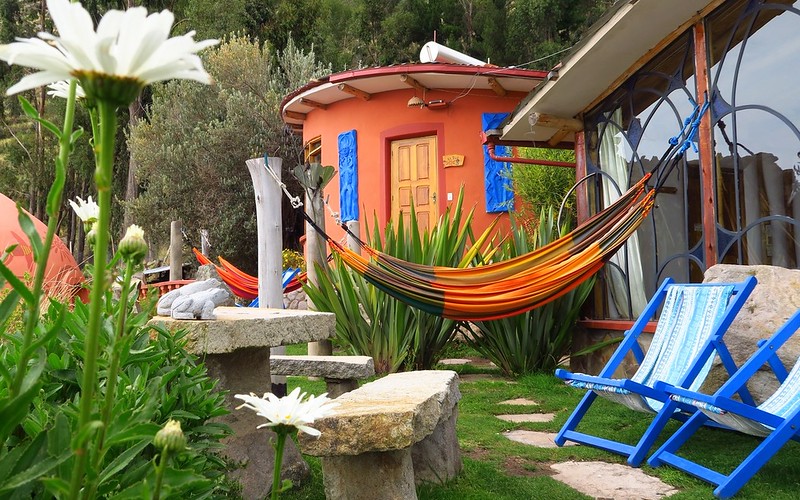
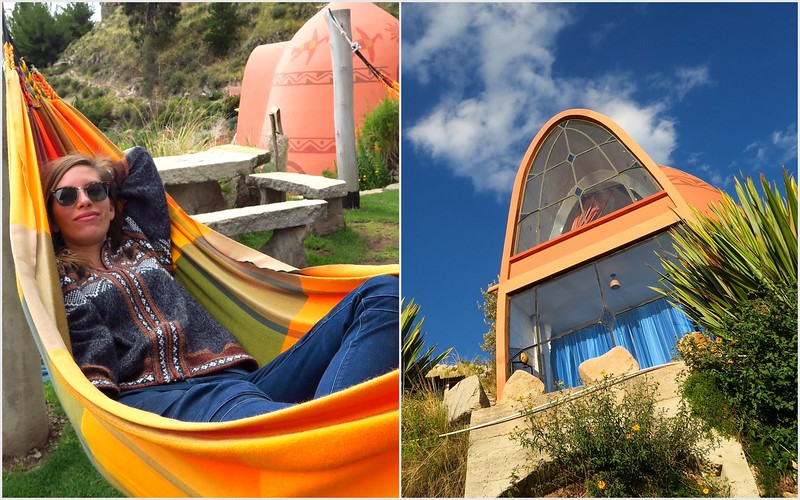
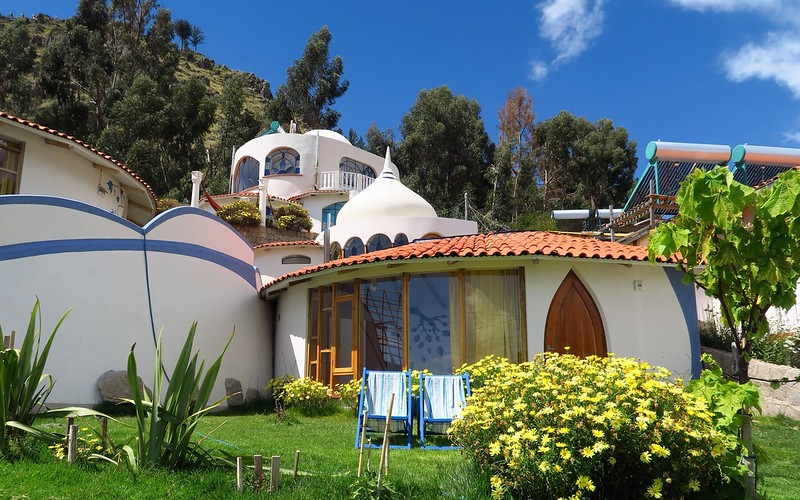
Stay in a quirky house on Lake Titicaca
If you’re looking for accommodations unlike any other, I would suggest booking a room at Las Olas like we did. They have a collection of out-of-this-world cottages; some of them are terracotta rondavels with swirling roofs, and others are more like rustic treehouses with floor to ceiling windows.
We had read in our guidebook that these cottages need to be booked well in advance because they’re usually full, but we got lucky being there during the rainy season and we managed to snatch one on the spot! I should also mention that this property has terraced gardens with roaming llamas, a hot tub overlooking the harbour, and plenty of hammocks to lounge on. I almost don’t want to admit it, but we spent more time enjoying our funky little cottage than we did exploring the town!
If for some reason Las Olas is booked up, their sister property La Cupula, is also a pretty cool spot right next door. Their construction has a bit of a Santorini feel with white-washed buildings, blue-stained glass accents, and rooftop domes.
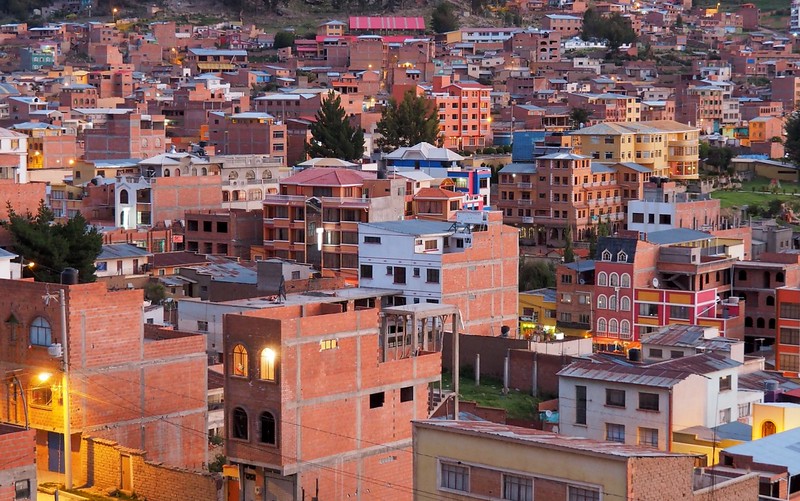
Watch a car blessing ceremony
In the town of Copacabana you can get your car blessed. Yes, you read that right.
This is a pretty unusual ceremony that I haven’t encountered anywhere else in the world, and it’s pretty fascinating to watch. The car blessing ceremony takes place just outside the cathedral where a priest walks around spraying holy water on an assortment of minivans, pickup trucks, buses, and cars so that they’ll all have safe journeys on Bolivia’s perilous roads.
But this isn’t just any old blessing; at times this feels more like a party. Just outside the church you’ll find a row of vendors selling trinkets to deck out your car like it’s parading in Carnival. You can buy flowers, confetti, streamers, party hats, and even bottles of sparkling wine…to spray on the cars, not to consume while driving.
This is about as unusual as it gets.


Spend an afternoon on the lake
Copacabana has a really nice harbour and while you couldn’t dare me to dip a toe in the chilly waters of Lake Titicaca, there’s actually a lot you can do in terms of water sports. Sam and I ended up renting a paddle boat that looked like a duck and didn’t steer too well, so it turned into a bit of an adventure.
We saw other people renting kayaks and jet-skis, and there were also these weird cylindrical contraptions that you could run around in much like a hamster ball on the water.
Eat grilled trout at the beach stands
I’m not going to lie to you, the food in Copacabana was pretty sub-standard. The one time we ordered nachos we got a plateful of Doritos with a ketchup based tomato sauce, and then when I tried ordering pasta I got a plate of spaghetti floating in water with a bit of a diluted tomato paste. Not impressed!
While most restaurants failed to tickle my taste buds (we eventually decided to stick to hotel restaurants and that was better), the one dish that did not disappoint was the grilled trout. This is considered to be a bit of a local specialty and it’s fished straight out of Lake Titicaca. The boardwalk is lined with a series of tent-like eateries where you can get a plate of grilled fish with a slice of lemon, and it’s probably the best meal you’ll have in town.
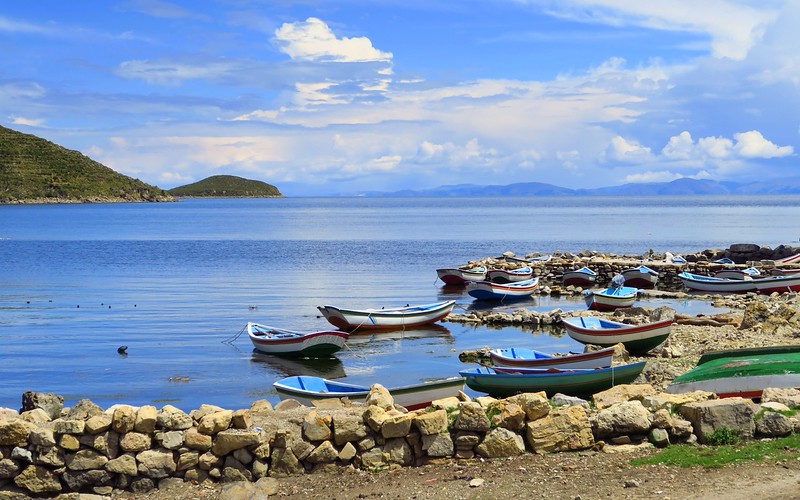
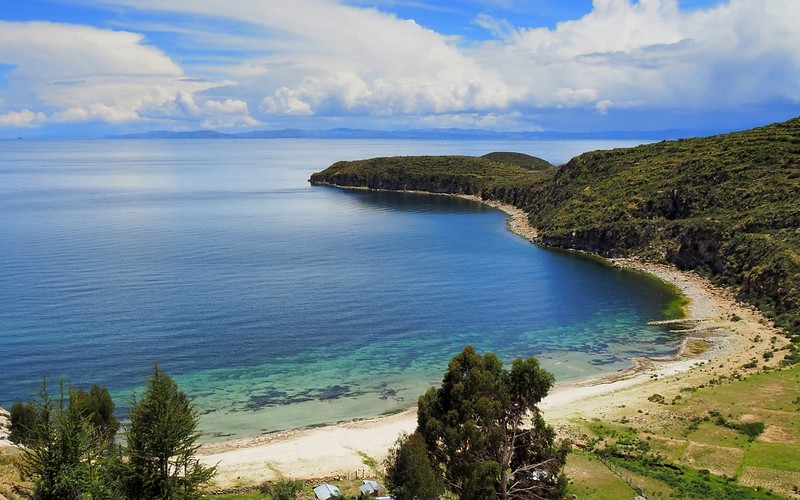
Take a day trip to Isla del Sol
A popular day trip from Copacabana is to Isla del Sol, which translates to “the island of the sun”. The north end of the island is home to some ruins, including: Chincana, Mesa de Sacrificio, and Roca Sagrada (though I didn’t find them particularly impressive after seeing some of the ruins on the Inca Trail to Machu Picchu).
Isla del Sol also has its own Inca Trail that runs from the north end to the south end of the island. The boat captain will try to tell you that this only takes 2.5 to 3 hours, but don’t believe him!
There are two trails (one that runs by the water and another that weaves through the mountains); if you’re walking up to the ruins and then doing the 8 kilometres across to Yumani using the harder trail, it’ll take you closer to 4 hours. It’s a very steep walk with lots of uphill stretches towards the beginning, and due to the high altitude, I found that I needed to take breaks quite often. We had to hustle in order to reach the opposite end of the island before the boat left, and we only made it with 10 minutes to spare.
Tolls & Accommodation Options
You should also be prepared to pay a series of tolls for using the trails and visiting the ruins along the way (I paid 10 Bolivianos at the first toll, 15 at the second toll, and 5 at the third toll). If you don’t want to walk across the island, you can have the boat pick you up at the first drop off point in Challapampa.
Another option is to spend a night or two in Isla del Sol. The island has a few basic hostels and the beach north of Challapampa is a popular hippie camping spot – expect lots of tents, people braiding hair, and drum and guitar circles.
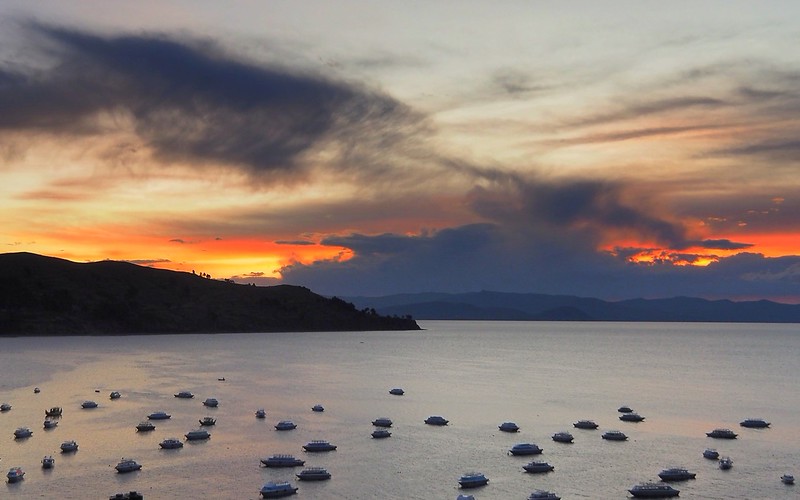
In retrospect, 5 days may be a bit too long to spend here if you’re looking to tick off attractions, however, if you just want to relax and enjoy some pretty epic sunsets over Lake Titicaca, this isn’t a bad place to be.
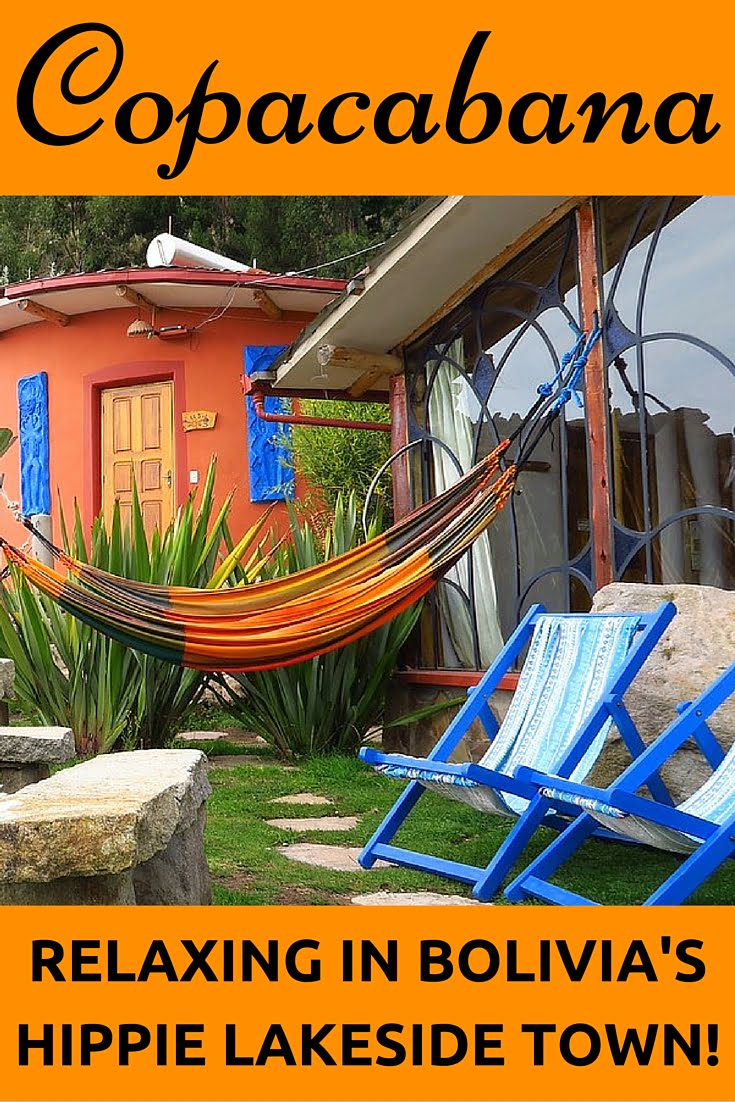
Travel Guide to Making the Most of Copacabana, Bolivia: Tips & Insights
Arriving in Copacabana: Practicalities & First Impressions
Getting There:
The majority of travelers arrive by bus, usually coming from La Paz (a stunning ride along the winding highway with dazzling mountain and lake views) or crossing the border from Puno, Peru. The border crossing at Yunguyo is straightforward but can be slow—bring patience, snacks, and your best sense of humour. The final descent into Copacabana gives you that classic first glimpse. Rolling green hills, glinting blue lake, and the red-tiled roofs of town.
First Steps:
On arrival, don’t be surprised if you’re greeted by a handful of locals offering hostel rooms, boat rides, or souvenirs. Take your time. The best approach is to walk down the main avenue (Avenida 6 de Agosto) to get your bearings. Everything in Copacabana is walkable, from the bus terminal to the harbour, the cathedral, the market, and back again.
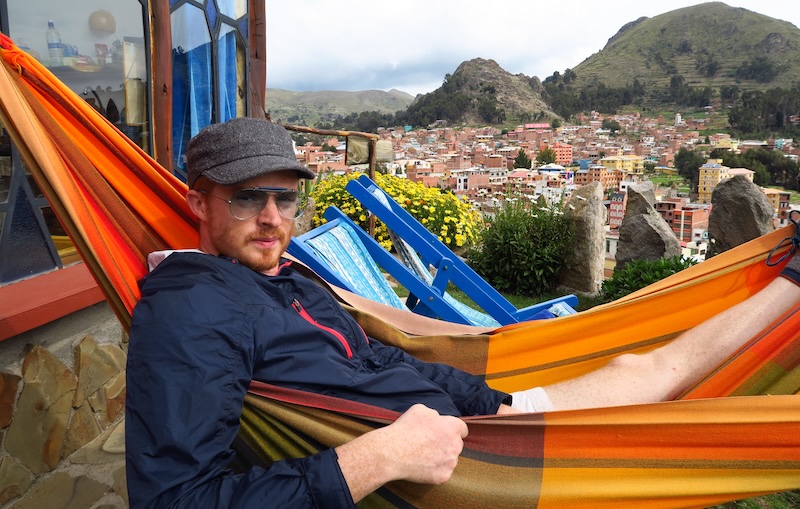
Choosing Where to Stay: More Options for Every Budget
Funky Boutique Hotels & Hippie Hostels:
Las Olas and La Cupula get a lot of well-deserved love for their whimsical architecture and killer views. But Copacabana offers more for every taste and budget:
- Eco-Lodges & Camping:
If you’re keen on sustainability and nature, check out Hostal Joshua or Ecological Hostel Viajero. Some lakeside properties even offer tent camping, with shared fire pits and lake views. - Family-Run Guesthouses:
These are dotted around town and offer a real slice of local hospitality—think home-cooked breakfasts, strong Bolivian coffee, and maybe a resident alpaca or two in the garden. - Luxury on a Budget:
While “luxury” is relative in Copacabana, a few hotels like Hotel Rosario del Lago have balconies overlooking the water and bathtubs big enough to soak off the altitude.
Tip:
Many properties don’t take online bookings—walk around and ask to see a room. Prices often drop if you’re staying a few days or visiting outside of peak season (May–September).
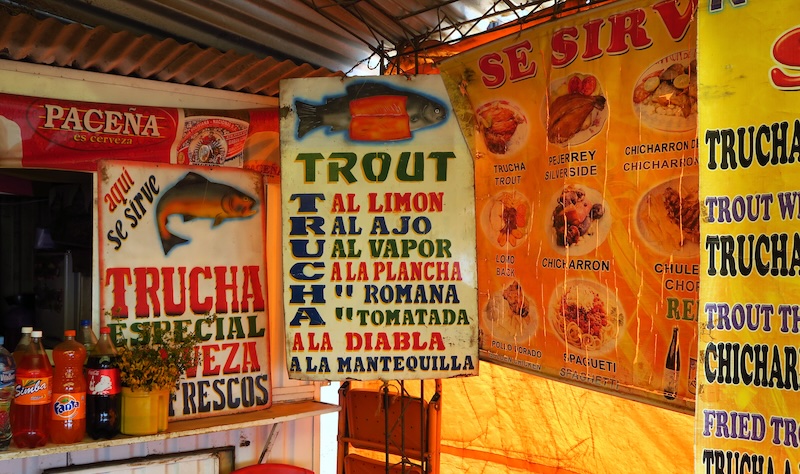
Savouring the Local Flavours: What & Where to Eat
Lake Titicaca Trout:
I mentioned the grilled trout at the beach stands (which is a must!). For a different take, try “trucha al ajo” (trout grilled with garlic) or “trucha a la diabla” (spicy trout), sometimes served with golden fries and the ubiquitous Bolivian rice. It’s freshest at the simple, tarp-covered restaurants right on the harbour.
Local Markets & Street Food:
The market just off the plaza is the place for cheap empanadas, papas rellenas (potato balls stuffed with cheese or meat), and freshly squeezed orange juice. For breakfast, try api—a hot, sweet purple corn drink paired with fried “buñuelos” (doughnut-like pastries).
Vegetarian & Hippie Cafés:
Copacabana’s hippie spirit means you’ll find a handful of vegetarian and vegan spots, like El Condor & The Eagle Café or La Orilla. Expect banana pancakes, fresh smoothies, big salads, and hearty soups, all made with lake views.
Coffee & Cake:
Try Café Bistrot for the best coffee in town, or stop at the quirky local bakeries for “torta de tres leches” (milk cake) or “alfajores” (dulce de leche-filled cookies).
Pro Tip:
Be patient with service—everything moves a little slower in Copacabana, and “mañana” energy rules. Bring a book, order a local beer or mate de coca, and enjoy the downtime.
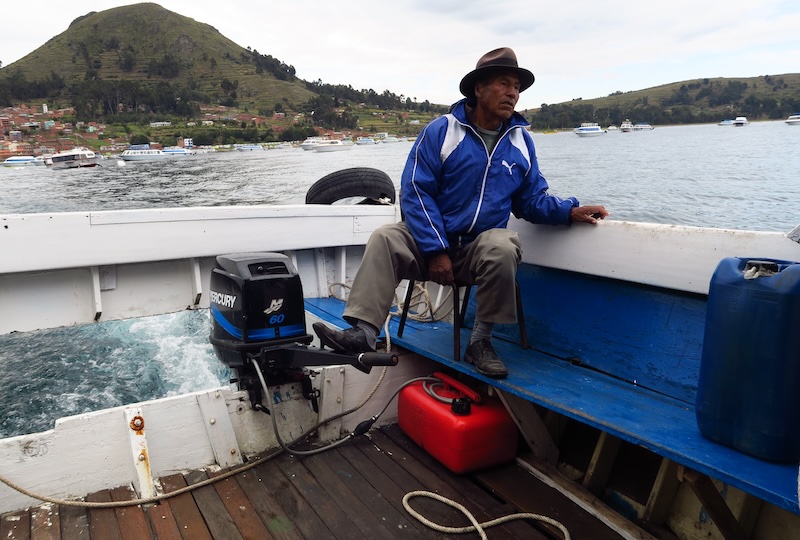
Getting Around and Exploring: Walking, Boating, and Beyond
On Foot:
Copacabana is built for walking—amble down Avenida 6 de Agosto, meander through the markets, and climb the short but steep path to Cerro Calvario for those legendary sunset views over the lake. The top can be windy, so bring a light jacket and your camera.
Boat Excursions:
- Isla del Sol & Isla de la Luna:
Isla del Sol is the big draw, but Isla de la Luna (less visited, smaller, and quieter) also offers mysterious ruins and a very local experience. You can arrange a combined boat trip from the harbour; just be sure to double-check the return times. - Sunset Cruises & Paddle Adventures:
If you want something unique, look for locals offering sunset cruises—small boats, snacks, and panoramic views as the sky explodes with colour. - Kayaks and Pedal Boats:
Available for hire right at the harbour—perfect for a quick, fun spin on the lake. Just don’t expect Olympic-quality equipment.
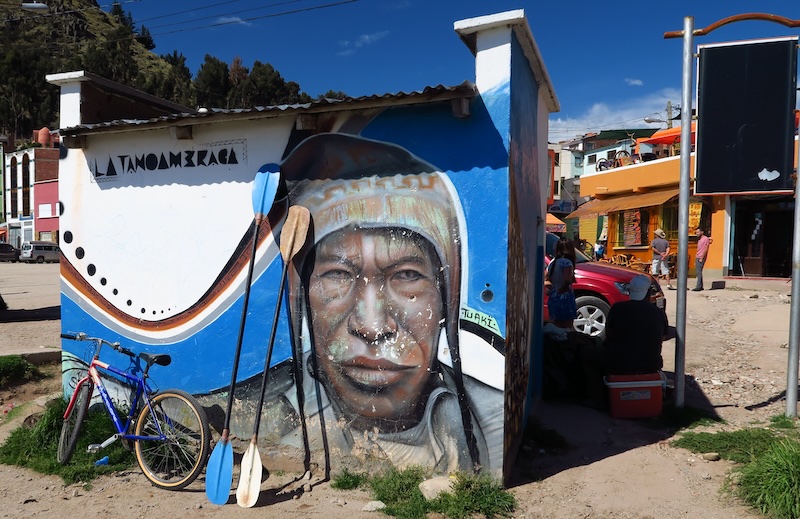
How Long Should You Stay? ‑ A Sample 3‑Night Flow
| Day | Sunrise‑to‑Siesta | Late‑Afternoon | Golden‑Hour & Evening |
|---|---|---|---|
| Day 1 – “Settle & Stroll” | Arrive from Puno or La Paz by tourist coach. Check‑in at Las Olas / La Cúpula (or the equally arty Hostal Joshua if budgets are tight). | Walk the malecón, stop at one of the orange‑tarp trout stalls for almuerzo, then flag a moto‑taxi to Cerro Calvario. | Scramble the 238 stone steps, light a candle at the last station of the cross, and watch Titicaca turn molten gold. |
| Day 2 – “Island of the Sun” | 8 a.m. boat to Isla del Sol (north wharf). Optional donkey transfer if altitude hurts. | Picnic at Playa Cha’lla and start the ridge trek south (budget 4 h incl. photo stops). | Sunset piso‑sour on the Yumani terraces, then last boat back to Copacabana (or splurge on an island homestay). |
| Day 3 – “Culture & Calm” | 10 a.m. Basilica of Our Lady for the Virgen de la Candelaria shrine. Duck into the back courtyard to watch artisans polish up the next batch of flower garlands. | Noon car‑blessing show: choose a vantage by the fountain so you catch the confetti splash zone. | Cap the trip with a lakeside bonfire at La Cúpula’s Jardin or live pan‑flute at Café Bistrot 5. |
Food Game‑Plan Beyond Trout
| Dish | Where to Try It | Price (Bs) | Why It’s Worth Your Calories |
|---|---|---|---|
| Quinua Atamalada (creamy Andean quinoa stew) | El Fogón de Los Andinistas, Calle Jáuregui | 30 | Local grandmother runs the stove; bowl arrives bubbling in a clay pot. |
| Api con Pastel (purple‑corn cinnamon drink + cheesy fritter) | Street cart outside Mercado 2 de Febrero, from 07:00 | 6 | Cheapest altitude cure and sweet breakfast combo. |
| Trucha al Vapor con Huacatay | Restaurante La Orilla, malecón | 45 | Steamed lake trout under anise‑mint sauce, served with cancha. |
| Helado de Caña (cane‑sugar ice) | Plaza kiosk run by Señora Rosmery | 5 | Perfect post‑summit reward after Cerro Calvario hike. |
Health & Altitude Hacks
- Soroche (altitude sickness): hydrate 3 L/day; avoid alcohol first 24 h. Pharmacies sell Sorojchi Pills (aspirin + caffeine).
- Sun Punch: UV index hits 12. Broad‑brim hat + SPF 50 mandatory even when cloudy.
- Tap Water: not potable. Las Olas offers free refills of filtered. Otherwise buy the 7 L garrafón and decant.
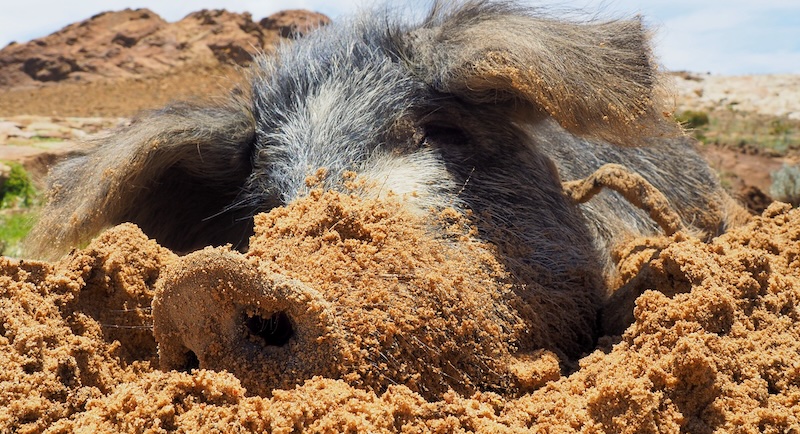
Packing Quick‑List
- Fleece + packable down jacket (lakeside wind bites).
- Lightweight rain‑shell (afternoon storms Nov‑Mar).
- Reusable water bottle + SteriPen if continuing to Uyuni.
- Head‑torch (Isla del Sol blackouts).
- Stack of 5‑ & 10‑Bs coins for trail tolls, toilets, colectivo returns.
- Spare passport photos for any sudden Bolivian visa extensions.
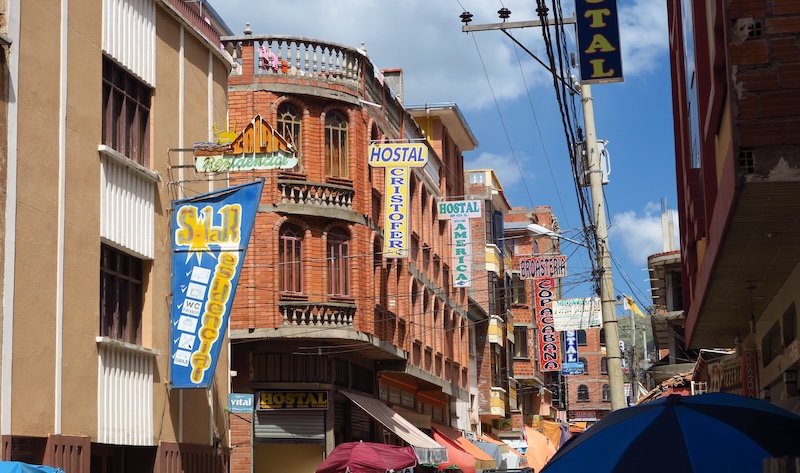
Copacabana, Bolivia — 12-Question FAQ for a Chill Lake Titicaca Escape (Stays, Island Hops, Sunsets & Slow Travel)
1) How do I get to Copacabana?
Most travelers arrive by bus from La Paz or from Puno (Peru) via the Yunguyo border. Expect scenic lake views, a brief border stop (carry passport, small cash, patience), and a short downhill walk from the bus stop to town and the harbour.
2) How many days should I stay?
2–3 nights works for most: one day to settle in and climb Cerro Calvario for sunset, one day for Isla del Sol, and a bonus slow day for lake time, cafés, and the cathedral. If you’re in recovery mode, add a fourth “hammock” day.
3) Where should I stay—and do quirky cottages really exist?
Yes! Iconic hillside spots like Las Olas (whimsical, glassy cottages) and La Cúpula (white-washed domes) are beloved for views and gardens. There are also simple guesthouses and hostels near the plaza/harbour. In shoulder/rainy season you can often walk in and inspect rooms.
4) What’s the famous car-blessing ceremony?
Outside the basilica, owners decorate vehicles with flowers, ribbons and bubbly, then a priest sprinkles holy water for safe travels. It’s equal parts ritual and street-party—colorful and very photogenic. Be respectful around the church steps and participants.
5) Is Isla del Sol worth a day trip—and how long is the hike?
Yes—think blue water, terraced hills, tiny hamlets. Boats typically drop at the north and collect at the south (Yumani). The ridge walk can take 3–4 hours at altitude (there are two routes; the ridge is harder but prettier). Pad your time for photos and breathers.
6) What fees should I expect on Isla del Sol?
Community checkpoints may collect small trail/ruin tolls (carry small Bolivianos like 5s and 10s). Keep the stubs handy—some sectors check again later.
7) What should I eat?
Go straight for grilled trout (trucha) at the simple harbour tents—garlic, lemon, or spicy styles. For snacks, hit the market for empanadas, papas rellenas and fresh orange juice. Vegetarian cafés serve smoothies, soups and pancakes with lake views.
8) How tough is the altitude—and how do I cope?
Copacabana sits around 3,800 m (12,500 ft). Hydrate, take it slow on day one, avoid alcohol/heavy meals, and try coca tea. Nights get cool; pack a fleece, light down/rain shell, and sunscreen (UV is fierce even when cloudy).
9) What lake activities can I do besides boat trips?
Rent pedal boats or kayaks right off the beach for short spins (gear is basic but fun). Sunset cruises are sometimes offered by local skippers—confirm departure/return times and price beforehand.
10) Is Copacabana walkable and safe?
Yes—very walkable. Normal common-sense precautions apply (watch bags in crowds, especially around the market and bus arrivals). Cobbles + hills mean good shoes help, especially for Cerro Calvario.
11) Will I find ATMs and mobile data?
There are ATMs, but they can run out or go offline. Bring a cash buffer. Local SIMs generally work around town; coverage can drop on boats and on parts of Isla del Sol.
12) Any packing must-haves I’ll thank myself for?
Small bills for tolls/tips, headlamp (island overnights/early boats), reusable bottle, tissues/hand gel, hat + SPF 50, and a wind layer for sunset viewpoints. If hiking the island, add snacks and a simple first-aid/altitude kit.
Practical Tips & Final Thoughts
Coping with Altitude:
At 3,800 metres above sea level, Copacabana is high. Even if you’ve acclimatized in Cusco or La Paz, take it slow. Drink lots of water, avoid heavy meals your first day, and try coca tea for mild symptoms.
Money Matters:
There are ATMs in Copacabana, but they sometimes run out of cash—bring some Bolivianos with you, just in case.
Responsible Travel:
Lake Titicaca is a fragile ecosystem—minimize plastic waste, use eco-friendly toiletries, and always pack out your trash, especially if camping on Isla del Sol.
Have you ever been to Copacabana?

This looks like heaven!!! That sunset and the hammocks set the tone for an idyllic retreat! but I’m disappointed about the general food situation- the nachos sound very unappealing!!!!
Gotta love a cottage with a set of hammocks! It was relaxation to the max. 🙂
Wow, we will definitely be hitting up Copacabana when we go to Bolivia next year! The place you stayed at looks awesome! What was the average price for a room per night?
The rates depend on whether it’s high season or low season, and whether you’re booking a short stay or a long stay. We managed to get a 2-story cottage for 4 at $64/night, and that was a deal!
That house is sooooo beautiful!
The whole property is filled with really unusual constructions! It’s a fun place to stay if you ever pass through Copacabana.
I’m incredibly jealous right now! I would love to one day get to Copacabana and stay in that adorable little house!
Shona x
http://www.shonarose.blogspot.com
I hope you get to! Copacabana is a great little stopover if you’re ever travelling from Puno to La Paz.
Beautiful cottages! I bet it was a super relaxing 5 days there… I know that while my husband and I travel for a while, we also love to stay somewhere for an extended period of time to chill and recoup from constantly being on the go. This looks like the perfect spot when we go to Bolivia 🙂
Thanks for the beautiful pics too!
Yes! Travelling can be quite tiring when you’re packing a lot of destinations into a short period of time, so I’m always glad when we can take a few days to relax and not do much in terms of sightseeing. Copacabana was great for that.
Amazing pictures! The place where you stayed in Copacabana almost doesn’t look real, it looks more like a very cool cartoon.
It was pretty unusual. It almost looked like something out of a children’s story book!
Aww this was such a lovely throwback to the times I spent in Copacabana 🙂 I’d almost forgotten about the car blessing ceremonies (no idea how though – they were hilarious!)
I couldn’t figure out what was happening at first. I thought they were just decorating their cars with flowers for a festival or something!
Attractions… who needs them when you have views like that, food like that, and hammocks to relax in. 🙂
I like your way of thinking. Good food, hammocks, and maybe a little cocktail thrown in. 😉
I’ll be in South America soon, and I’m very excited after browsing your last few posts. Lake Titicaca looks awesome!
I’m glad to hear that, Lily! Wishing you a great trip around South America. 🙂
Trout looks nice! How cute are the dogs that joined you for lunch! Heart melting!
The pups were the sweetest! They’re even friendlier when there’s food around. 😉
Any place with hammocks is alright by me! And seriously, a car blessing ceremony? That’s pretty rad…